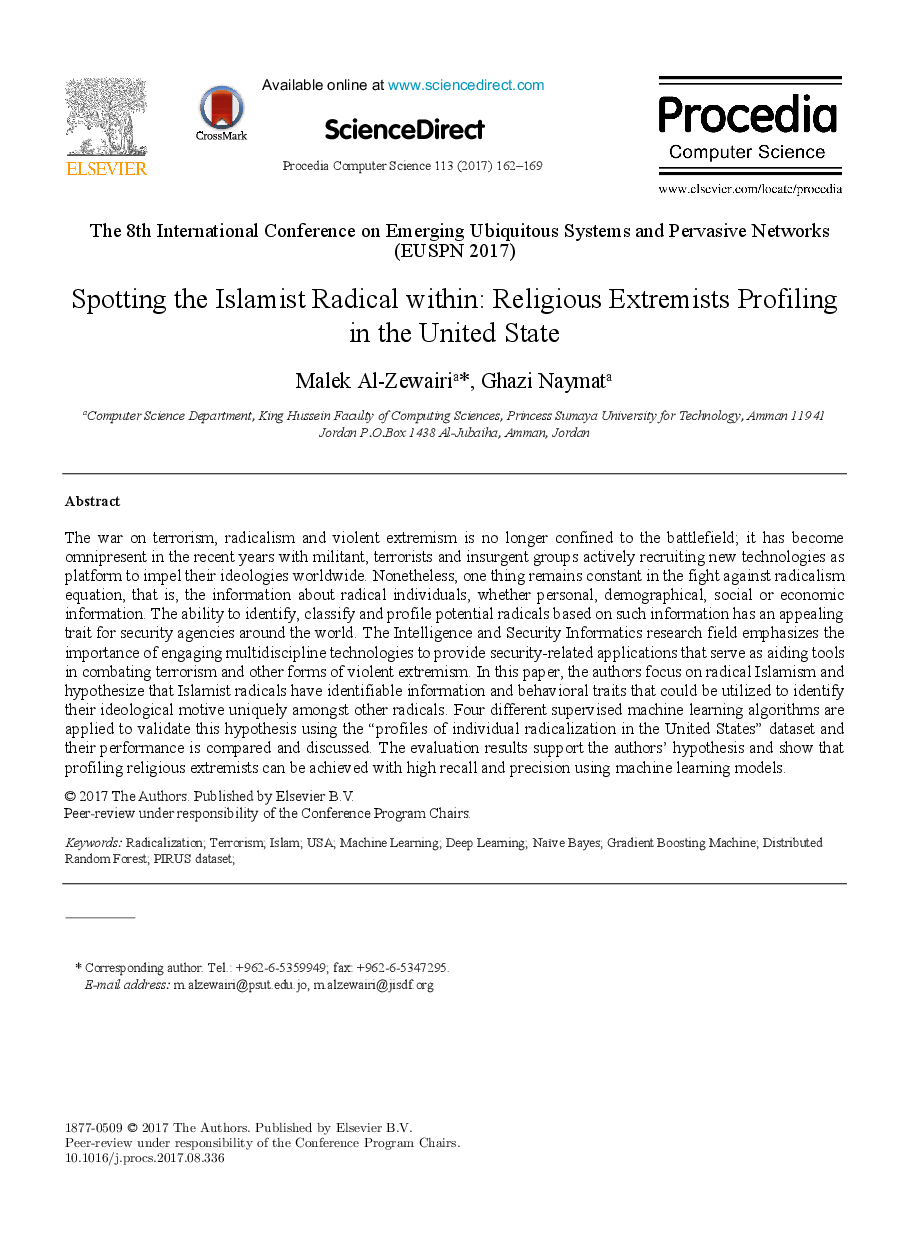ترجمه فارسی عنوان مقاله
تطبیق رادیکال اسلامگرای درون: تدوین افراط گرایان مذهبی در ایالت متحده
عنوان انگلیسی
Spotting the Islamist Radical within: Religious Extremists Profiling in the United State
| کد مقاله | سال انتشار | تعداد صفحات مقاله انگلیسی |
|---|---|---|
| 157566 | 2017 | 8 صفحه PDF |
منبع

Publisher : Elsevier - Science Direct (الزویر - ساینس دایرکت)
Journal : Procedia Computer Science, Volume 113, 2017, Pages 162-169

